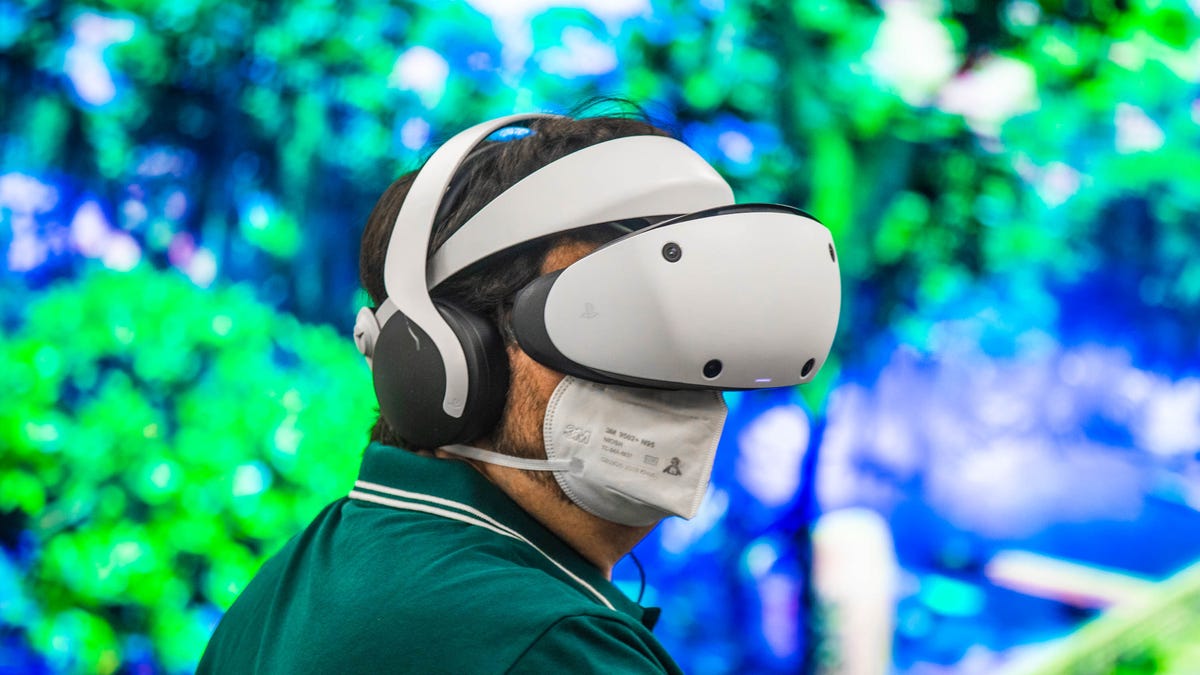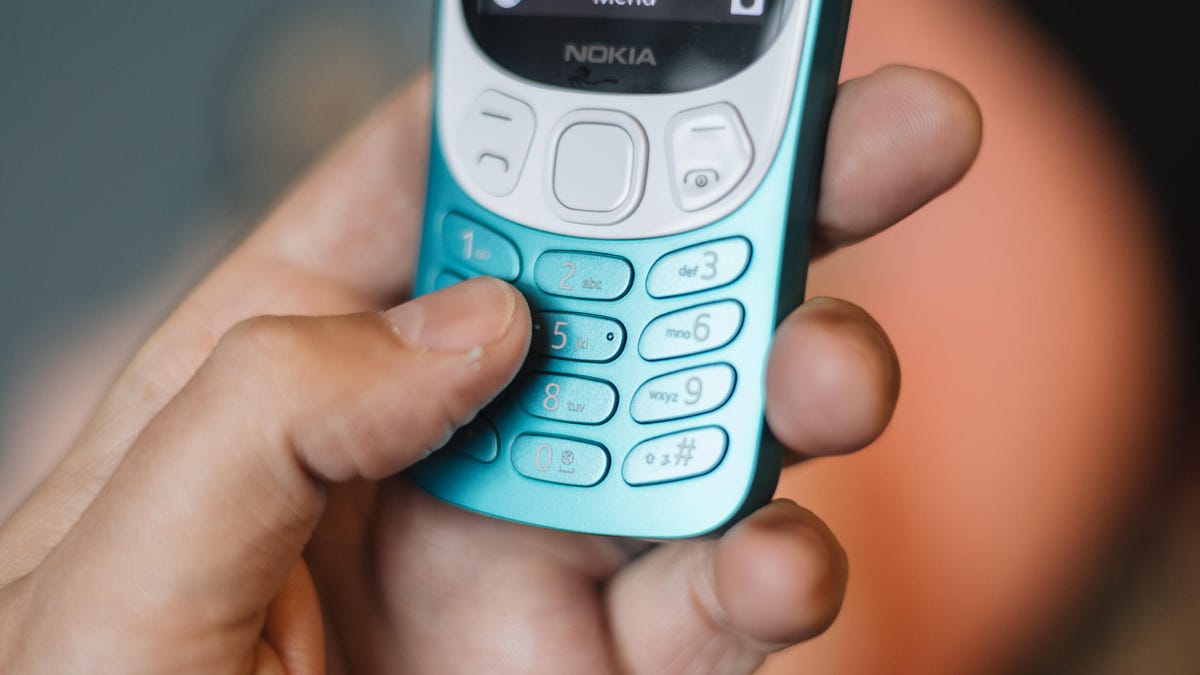Technologies
2023 Could Be the Metaverse’s Make-or-Break Year
A wave of new VR/AR headsets is coming, but Apple’s plan is the biggest mystery of all.

I could tell you about all the VR headsets and AR glasses and theoretical apps I tried this year that were supposed to define 2022’s vision of the metaverse. Instead I’ll just tell you about the best thing I did this year, and the thing I miss the most: Doing improv acting workshops with a little group of other performers in VR.
We gathered every week in an app called Altspace VR, invited by a brilliant interactive acting teacher named Jeff Wirth. We met every Monday, exploring ideas in performance with avatars. I put on my Quest 2 headset in my dusty little home office and met with friends I’d never seen in person.
The class ended too soon, and when I look back, I remember these sessions like we were really together. That’s what the metaverse is to me. It’s a real thing. We’re just not all there yet.
2022: A brief look forward, but only brief
More recently, standing in a kitchen, changing countertops and looking at cabinet finishes, I walk over to the window. I see a blank white room outside, along with a mirror. I see myself, with a VR headset on. I’m standing in a virtual room, suspended in a real room with mixed reality, wearing a Varjo XR-3 headset. This jarring moment represents the future — yet still the unrealized potential — of what could be coming next.
I thought 2022 would be a big year for VR and AR, and even the metaverse, a buzzword concept that’s a stand-in for how the world’s internet and virtual communities, including social media, could evolve. It wasn’t. An economic downturn, crypto’s collapse, waves of tech layoffs, and the delay of many of the most-expected VR/AR devices turned this year around fast.
Now 2023 is looking to be the big year for immersive «extended reality» (aka XR). Apple’s long-expected headset should arrive, with expectations that it’ll rattle the landscape. Meta’s Quest 3 is confirmed. The PlayStation VR 2, a headset I’ve already tried, is coming in February. And who knows what other surprises the new year will bring?
As far as the metaverse goes, it’ll only move as far as mass social adoption takes it. I’m more interested in the hardware that’ll power such tech, because until VR and AR headsets take their next leap, it’s still going to be a challenge to expect people to spend more time in them than they already are. But this is what 2022 showed me, and where it points to 2023.
Magic Leap 2, Meta Quest Pro: A mixed-reality future coming
The two headsets that made the biggest impact on me this year bookended 2022: Magic Leap 2 and Meta Quest Pro. They are, in many ways, mirror products. One is trying to approach the future of mixed reality from the AR side; the other is coming to mixed reality from the VR side. Both are trying to become more comfortable, and more reliable. Both show that there still is no ideal form for The Next Headset yet, but we’re slowly getting closer to a consensus on how the devices might do it.
The Magic Leap 2, a follow-up to the original Magic Leap headset that debuted back in 2018, has pivoted from a device targeted at the masses to a headset for business. The hardware is considerably better, and it maps overlaid, glowing virtual objects onto the real world with a greater field of view. It also, amazingly, dims out the world – a bit like a pair of sunglasses. But it’s not the ideal set of AR glasses: it runs on a more powerful dedicated processor connected to a belt-mounted mini-computer that it’s tethered to, and its single controller is fine for basic controls but not necessarily for full immersive interaction.
The Meta Quest Pro really isn’t that big a change from the two-year-old Quest 2, and certainly isn’t worth the extra $1,100 for anyone who isn’t a developer. But its improved features eye- and face-tracking, and better mixed reality with color passthrough cameras — are indicators of what will show up on many VR headsets (and AR ones) in 2023 and beyond.
The Quest Pro’s mixed reality is what really surprised me. It’s not great, but it’s similar in spirit to what the Varjo XR-3 headset can do. And the Pro, when it’s on my head running a mixed-reality app, reminds me more of AR headsets like the Microsoft HoloLens 2 than a VR headset. The way I can see the world and also see around the display through my peripheral vision feels like some sort of glasses-like AR experience, for a moment, even if it’s not.
No one is able to make good AR glasses yet. Instead, everyone’s trying to get a bit closer as best they can.
Expect more competition for Meta
The Pico 4 VR headset, made by TikTok parent company ByteDance, feels like a clone of the Meta Quest 2 but with some improvements. What’s really surprising is its price undercuts Meta’s. ByteDance did this intentionally, and likely at a loss, but it shows that somewhat affordable standalone VR headsets could be a much more common thing going forward. Pico already has them. Some of Qualcomm’s device partners using the company’s ubiquitous VR/AR chips will have them, including, likely, HTC Vive, which is already teasing a mixed-reality headset for CES. Valve is rumored to have a standalone VR headset of its own, codenamed Project Deckard, that could make a big gaming splash. Pimax, a manufacturer of VR headsets, has a combination gaming handheld/VR headset called the Pimax Portal expected for early 2023, too.
What about phone-connected headsets?
Qualcomm has been promising a wave of phone-tethered AR and VR devices for years, and they’ve been starting to emerge. HTC’s Vive Flow, released in 2021, was an attempt at a smaller pair of phone/VR glasses. Qualcomm’s latest initiatives for smaller AR glasses arriving between 2023 and 2025 can work wirelessly with phones. It’s probably pretty likely that the powerful phones we carry with us will help do some of the heavy lifting for smaller headsets in the next few years. Apple could be planning that approach with its expected headset in 2023.
Here comes Apple
Apple’s long-expected headset, likely to be VR with mixed-reality capabilities similar to what the Quest Pro provides, could shake up the landscape like nothing else since the Oculus Rift. Apple’s products tend to disrupt and take over categories: the iPhone, the iPad, the Apple Watch, AirPods. Can Apple do the same with VR and AR? It’s a far greater challenge, especially with the technical questions and the expected price (well over $1,000, possibly several thousand), as well as the recession climate we’re in globally.
Even more interesting to me is who else comes out of the woodwork alongside Apple. Google has been laying low with AR and VR for years since its discontinued Google Daydream platform, but recent efforts like Project Starline and assistive smart glasses show there’s exploration going on. Samsung hasn’t had a new AR or VR device in years, either, even though the company was a VR pioneer with Gear VR and tends to jump into markets early with bold experimental products. Will 2023 be a year for showing surprise products?
Will people care enough to wear them?
As I ask myself whether VR headsets really have a future in people’s homes, I’m distracted by my 14-year-old son, who’s literally playing a VR game on the Quest 2 right next to me. VR’s already here for many people. It’s hard to appreciate that. It’s not «what if,» it’s «what else can I do?». VR headsets are mostly clever, limited-use game consoles for most people. Meta’s tried to flex the Quest to be more. Not everyone’s been interested, and the Quest’s not fully up to the challenge.
The next wave of VR and AR headsets need to be better at what they do: to be better game consoles; have more comfortable displays, more useful controllers and ways to interact; be more interconnected with the apps and devices we already have; be more portable and more accessible.
They need to work better with prescription glasses (I find many headsets don’t fit with my glasses, or can’t accommodate my prescription). New apps need to emerge that can show what a seamless 3D virtual world can do for us. Sony, Meta, possibly Apple and whoever else shows up next year need to do this, because VR/AR headsets aren’t necessary tools for everyone yet. They have proved some successes: for design, for simulations, for gaming, even for fitness. In 2023, I’m interested in seeing if they can be more.
One thing that does seem certain, though: There are a lot of new VR headsets coming in 2023, and they’re coming soon.
Technologies
Judge Blocks Texas App Store Age-Check Law
A preliminary injunction found the Texas law, set to begin Jan. 1, is «more likely than not unconstitutional.»

A new Texas state law set to take effect on Jan. 1 would have required app stores to implement age verification processes. But the law has been put on hold, at least temporarily, by a federal court judge.
As reported by the Texas Tribune, Senate Bill 2420, also known as the Texas App Store Accountability Act, is the subject of a temporary injunction issued by US District Judge Robert Pitman.
Pitman said in his decision that the law as written is broad, vague and «more likely than not unconstitutional.» However, he also wrote the court «recognizes the importance of ongoing efforts to better safeguard children when they are on their devices.»
Don’t miss any of our unbiased tech content and lab-based reviews. Add CNET as a preferred Google source.
The Texas law, signed into law by Governor Greg Abbott in May, requires app store operators — including Apple, Google, Nintendo, Steam and more — to build age verification processes for the storefronts and to only allow downloads to minors who obtain parental consent. The injunction is a ruling in an October lawsuit filed by the Computer & Communication Industry Association.
CCIA senior vice president Stephanie Joyce said in a statement, «This Order stops the Texas App Store Accountability Act from taking effect in order to preserve the First Amendment rights of app stores, app developers, parents, and younger internet users. It also protects parents’ inviolate right to use their own judgment in safeguarding their children online using the myriad tools our members provide.»
Other individuals and the advocacy group Students Engaged in Advancing Texas also filed suits over the law, the Texas Tribune reported.
App Store Accountability Act
The bill author, State Senator Angela Paxton, said the bill was meant to give parents «common sense tools to protect their kids and to survive court challenges by those who may have lesser priorities.»
The language of Texas Senate Bill 2420 does not only include mobile app stores from Apple or Google, but any «website, software application, or other electronic service that distributes software applications from the owner or developer of a software application to the user of a mobile device.»
By that definition, websites with links to browser games or mobile game consoles with download options would fall under the Texas law as written. The law also defines mobile devices as including phones and tablets, as well as any other handheld device capable of transmitting or storing information wirelessly.
The parental consent aspect of the law requires those under 18 to have an app store account affiliated with a parent or guardian to purchase or download applications.
Age verification elsewhere
In an effort to keep adult materials out of reach of minors and to protect children from potentially harmful content and interactions, tech companies have been compelled by law or through legal action to verify the age of users.
Roblox, which has a huge audience of minors, began rolling out stricter age verification after investigations and lawsuits hurt its reputation as a safe gaming space. Australia is perhaps the most large-scale example of a government restricting access to online content. In December, Australia began restricting social media access to those 16 and older. Reddit recently challenged that law.
In the US, age verification laws have primarily targeted adult sites. Texas already has a law on the books that requires adult sites to age-block their content. The Supreme Court upheld that law in a June ruling. The UK has also enacted age restriction rules for adult sites as have other US states.
Technologies
Today’s NYT Mini Crossword Answers for Thursday, Dec. 25
Here are the answers for The New York Times Mini Crossword for Dec. 25.

Looking for the most recent Mini Crossword answer? Click here for today’s Mini Crossword hints, as well as our daily answers and hints for The New York Times Wordle, Strands, Connections and Connections: Sports Edition puzzles.
Need some help with today’s Mini Crossword? Of course, there’s a very Christmassy clue involved. And once you solve the entire puzzle, look at the letters used in all the answers and see what they have in common. (5-Across will tell you!) Read on for all the answers. And if you could use some hints and guidance for daily solving, check out our Mini Crossword tips.
If you’re looking for today’s Wordle, Connections, Connections: Sports Edition and Strands answers, you can visit CNET’s NYT puzzle hints page.
Read more: Tips and Tricks for Solving The New York Times Mini Crossword
Let’s get to those Mini Crossword clues and answers.
Mini across clues and answers
1A clue: ___ King Cole, singer with the album «The Magic of Christmas»
Answer: NAT
4A clue: Body drawings, informally
Answer: TATS
5A clue: Letters to ___ (what this Mini was made with)
Answer: SANTA
6A clue: Huge fan, in slang
Answer: STAN
7A clue: «Illmatic» rapper
Answer: NAS
Mini down clues and answers
1D clue: Grandmothers, by another name
Answer: NANAS
2D clue: Abbr. before a name on a memo
Answer: ATTN
3D clue: Org. with long lines around the holidays
Answer: TSA
4D clue: «See ya later!»
Answer: TATA
5D clue: Govt.-issued ID
Answer: SSN
Don’t miss any of our unbiased tech content and lab-based reviews. Add CNET as a preferred Google source.
Technologies
Don’t Let a Border Agent Ruin Your Holiday Trip. Travel With a Burner Phone
Yes, you should leave your main phone at home and take a cheap burner this winter.

Prepare for a whole new level of border-crossing anxiety this holiday season: the high-probability of a phone search. New figures from US Customs and Border Protection say agents aren’t just glancing at your lock screen anymore — they are aggressively ramping up device inspections, even for citizens coming home. We aren’t just talking about a quick scroll through your photos, either. Agents are increasingly using forensic tools to clone and analyze everything on your device.
The stats are genuinely alarming. In just a three-month window this year, nearly 15,000 devices were flagged for searches, with over a thousand subjected to deep-dive data copying. If you’re traveling with your primary phone, you are essentially carrying your entire digital existence into a legal gray zone where privacy is optional.
The smartest defensive play is remarkably low-tech: the burner phone. By traveling with a secondary, stripped-down device, you ensure your private data stays safe at home while you stay connected abroad. But privacy isn’t the only perk. Moving to a «dumb» phone is the ultimate digital detox, helping you escape the notification trap that usually ruins a vacation.
Even figures like Conan O’Brien have ditched the smartphone to cut through the noise. Whether you’re dodging invasive border searches or just trying to enjoy your trip without being glued to a screen, a burner might be the best travel investment you make this year.
Read more: Best Prepaid Phone of 2025
Although carriers have offered prepaid phones since the ’90s, «burner phones» or «burners» became popular in the 2000s following the celebrated HBO series The Wire, where they helped characters avoid getting caught by the police. Although often portrayed in that light, burners aren’t only used by criminals; they’re also used anyone concerned with surveillance or privacy infringement.
What is a burner phone, and how does it work? Here’s everything you need to know about burners and how to get one.
Don’t miss any of our unbiased tech content and lab-based reviews. Add CNET as a preferred Google source.
What is a burner phone?
A burner phone is a cheap prepaid phone with no commitments. It comes with a set number of prepaid call minutes, text messages or data, and it’s designed to be disposed of after use.
Burner phones are typically used when you need a phone quickly, without intentions of long-term use. They’re contract-free, and you can grab them off the counter. They’re called burner phones because you can «burn» them (trash them) after use, and the phone can’t be traced back to you, which makes them appealing to criminals. Of course, those committed to illicit activities often do more than just throw these phones in the trash, and often completely obliterate the SIM cards and other materials by smashing them with a hammer or melting them away.
Burners are different from getting a regular, contract-bound cellphone plan that requires your information to be on file.
Why should you use a burner phone?
Burner phones are an easy way to avoid cellphone contracts or spam that you get on your primary phone number. Burners aren’t linked to your identity, so you can avoid being tracked down or contacted.
You don’t have to dispose of a burner phone after use. You can add more minutes and continue using it. Burner phones can still function as regular phones, minus the hassle of a contract.
You can also get a burner phone as a secondary phone for a specific purpose, like having a spare phone number for two-factor authentication texts, for business or to avoid roaming charges while traveling. Burner phones are often used by anyone concerned with privacy.
Read more: The Data Privacy Tips Digital Security Experts Wish You Knew
Burner phones, prepaid phones, smartphones and burner SIMs: What’s the difference?
Burner phones are cheap phones with simple designs that lack the bells and whistles of a smartphone. Because they’re designed to be disposable, you only get the essentials, as seen by the most common version, the flip phone.
All burner phones are prepaid phones, but not all prepaid phones are burners. What sets a burner apart is that you won’t have to give away any personal information to get one, and it won’t be traceable back to you. Again, a burner phone is cheap enough to be destroyed after use.
Prepaid smartphones are generally low-end models. You can use any unlocked smartphone with prepaid SIM cards, essentially making it a prepaid phone.
If you want a burner, you don’t necessarily have to buy a new phone. You can get a burner SIM and use it with an existing phone. Burner SIMs are prepaid SIMs you can get without a contract or giving away personal information.
Where can you buy a burner phone?
Burner phones are available at all major retail outlets, including Best Buy, Target and Walmart. They’re also often available at convenience stores like 7-Eleven, local supermarkets, gas stations and retail phone outlets like Cricket and Metro.
You can get a burner phone with cash, and it should cost between $10 and $50, although it may cost more if you get more minutes and data. If you’re getting a burner phone specifically to avoid having the phone traced back to you, it makes sense to pay with cash instead of a credit card.
If you just want a prepaid secondary phone, you can use a credit card. Just keep in mind that credit cards leave a trail that leads back to you.
There are also many apps that let you get secondary phone numbers, including Google Fi and the Burner app. However, these aren’t burners necessarily because the providers typically have at least some of your personal information. Additionally, apps like Google Talk require a phone number that’s already in use for you to choose a number with the service.
If you’re just looking to get a solid prepaid phone without anonymity, check out our full guide for the best prepaid phone plans available. We also have a guide for the best cheap phone plans.
-

 Technologies3 года ago
Technologies3 года agoTech Companies Need to Be Held Accountable for Security, Experts Say
-

 Technologies3 года ago
Technologies3 года agoBest Handheld Game Console in 2023
-

 Technologies3 года ago
Technologies3 года agoTighten Up Your VR Game With the Best Head Straps for Quest 2
-

 Technologies4 года ago
Technologies4 года agoBlack Friday 2021: The best deals on TVs, headphones, kitchenware, and more
-

 Technologies4 года ago
Technologies4 года agoVerum, Wickr and Threema: next generation secured messengers
-

 Technologies4 года ago
Technologies4 года agoGoogle to require vaccinations as Silicon Valley rethinks return-to-office policies
-

 Technologies4 года ago
Technologies4 года agoOlivia Harlan Dekker for Verum Messenger
-

 Technologies4 года ago
Technologies4 года agoiPhone 13 event: How to watch Apple’s big announcement tomorrow
